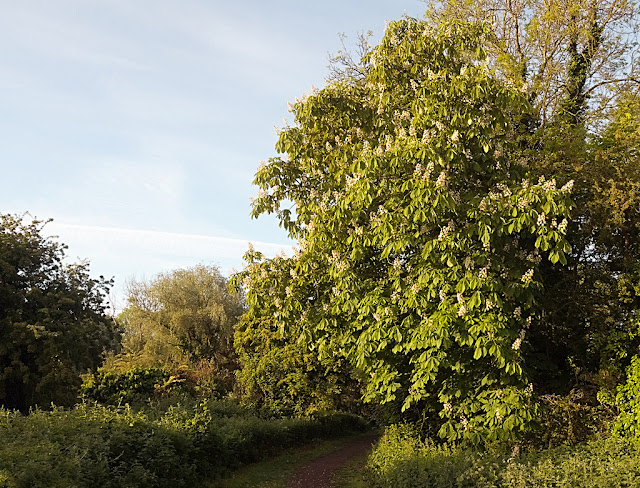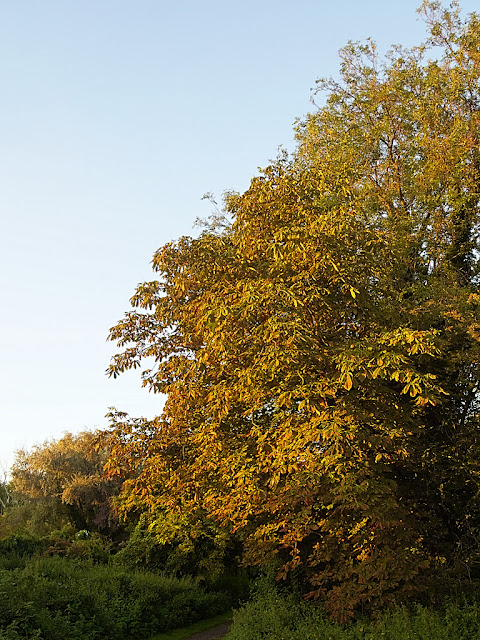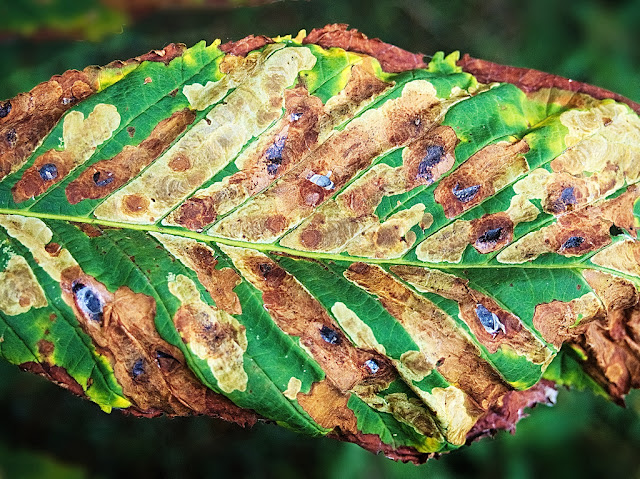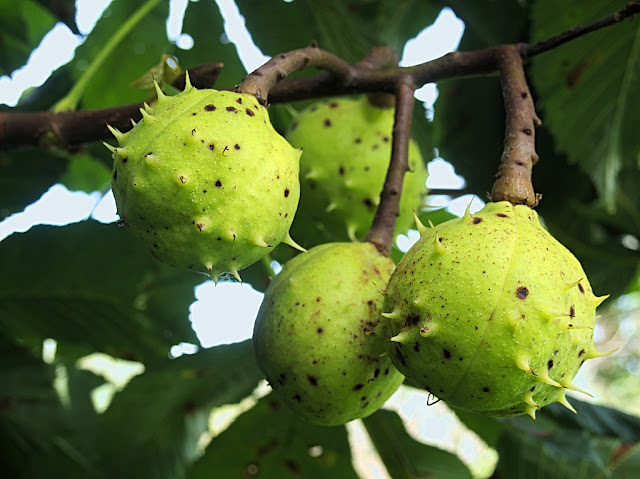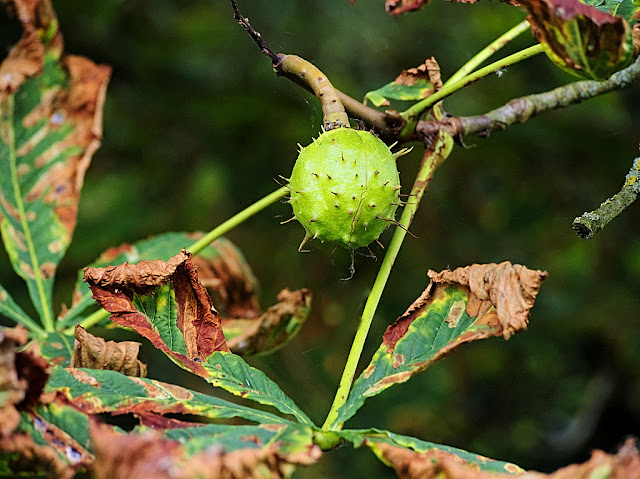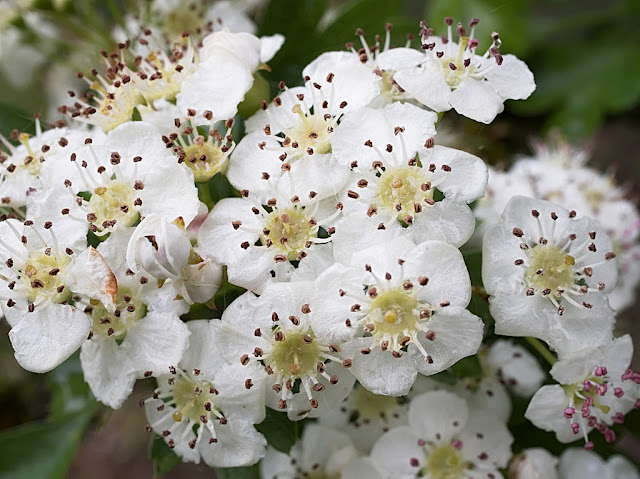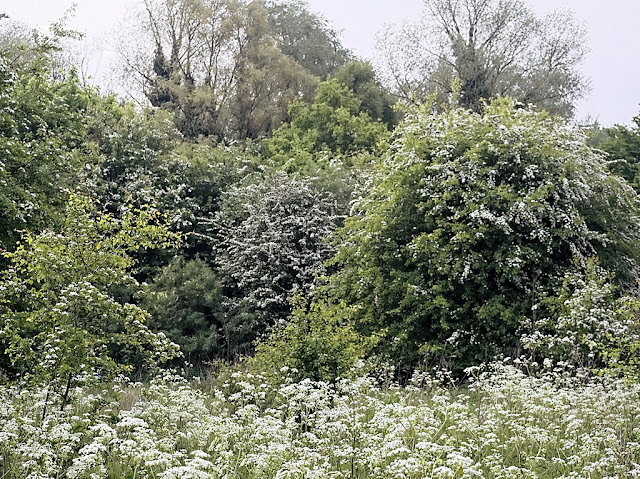 |
| Narrow Leaved Pea - 31 May 2017 The yellow in the background is cinquefoil |
Cinquefoil
 |
| Cinquefoil Growing on Wood Chips - 31 May 2017 Some clover and grass can be seen in the cinquefoil at the bottom of the picture |
 |
| Cinquefoil - 9 June 2017 |
Cinquefoil, a native of Britain, is seen by gardeners as an aggressive invader of lawns. In the past, it has been grown as a herb, particularly valued as an astringent used for cleaning wounds. It was believed to be an effective protection against witchcraft. Over the years, it has accumulated a number of alternative names, some of which, such as five fingers relate to the shape of its leaves. Others have a far less obvious origin: biscuits, bloodrot, ewe daisy, shepherds blood, and shepherds knapperty. Some of these are shared with the very similar tormentil, suggesting a degree of confusion between the two species.
 |
| Germander Speedwell - 9 June 2017 A lone speedwell plant in the clump of cinquefoil |
Black Medick
 |
| Black Medick - 14 June 2017 The grass stems tower above this tiny herb |
Another invader of lawns and mown grass is the black medick. This yellow flowered relative of the clover, has flower heads about four millimetres across. But the flowers that I photographed were growing in recently cut and well trodden grass, and the whole flower head was little more than two millimetres across. The name medick is derived from the Latin name for the plant, Medicago lupulina, which in turn is derived from the Greek medike, meaning a plant that had been introduced from Media (modern Iran). Not surprisingly given its low growing habit and very small flowers, it is a plant that has been generally overlooked in folklore, with few recorded uses except as a source of honey. Some claim it is the original shamrock.
White Bryony
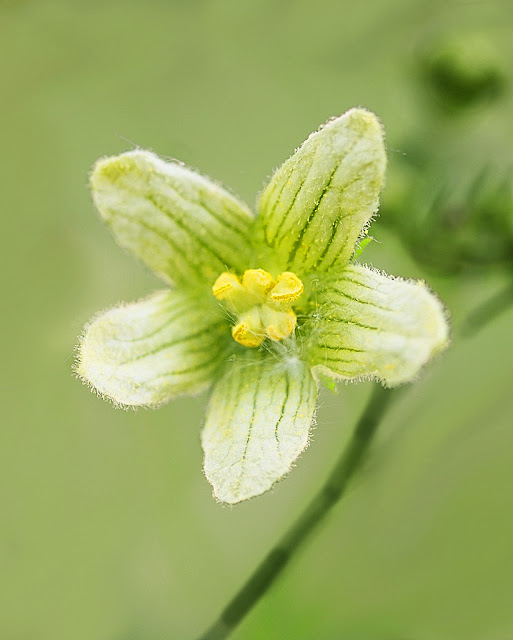 |
| White Bryony - 31 May 2017 |
The small pale green flowers of the white bryony are easily missed in the thick foliage of a hedgerow at the height of summer, in contrast to its chains of red berries, also called devil's apples, which are a prominent feature of autumn. White bryony is also called English mandrake, and like the mandrake it has a forked anthropomorphic root. It is said, that just like the mandrake, that when a white bryony plant is pulled up, its screams are so monstrous they cause agony, if not death, to anyone within earshot. But English mandrake has none of the magical properties of mandrake, it is not soporific, hallucinogenic or aphrodisiac. However, white bryony has been used as a very powerful laxative, to cure gout, to induce mares to foal, and to keep rats away from stored wheat.
Cleavers
 |
| Cleavers - 31 May 2017 Even close up the white flowers are almost invisible |
This year was the first time I have ever seen the small white flowers of cleavers. Like most other people, I knew this straggling annual from the smothering green blanket it forms over bushes and other vegetation and its habit of attaching itself to my clothing whenever I get too close. The tiny flowers born singly in the leaf axils are almost certainly the smallest things I have photographed so far in this project. Chris Packham in his book 'The Wild Side of Town' states that cleavers is insect pollinated. This seems quite amazing given that the flowers are almost vanishingly small.
Cleavers has long been used for various purposes: as bedding (Virgin Mary is reputed to have used it for the bed for the baby Jesus); the stems made into a mat and used to sieve milk; as a pot herb; its seeds used as a substitute coffee; its roots used as a source for red dye; and any number of medicinal uses including as a diuretic, a tonic, a sleeping draft, a cure for ear ache, and a remedy for snake bites. It has an equally impressive collection of alternative names: goosegrass, clivers, robin-run-in-the-hedge, love-man, sticky-willy, burweed, catchweed, and hedgesheriff.
a
Next: Summer Surprise

